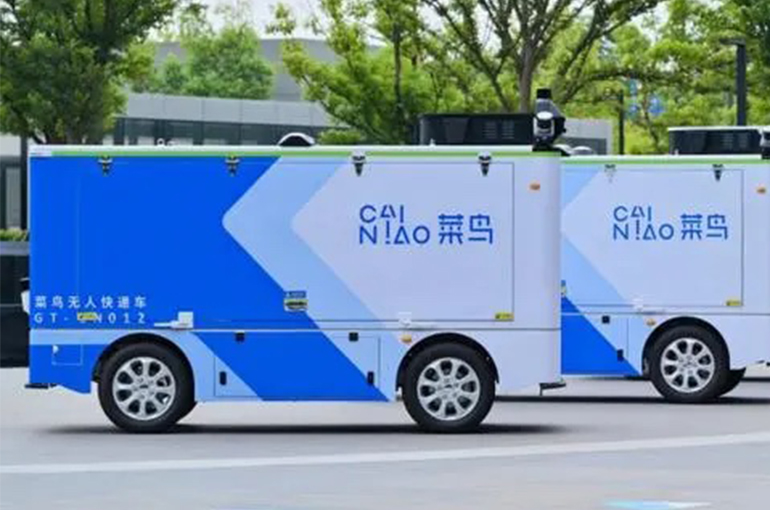 Alibaba’s Courier Arm Cainiao Brings Out Fully Autonomous Robovans
Alibaba’s Courier Arm Cainiao Brings Out Fully Autonomous Robovans(Yicai) Sept. 11 -- Cainiao Smart Logistics Network, the courier unit of Chinese e-commerce giant Alibaba Group Holding, has launched its Level-4 autonomous delivery vehicles, marking a further step toward large-scale, public-road operations.
Cainiao has been investing in self-driving technology since 2016 and began mass production of the unmanned delivery vehicles this year, Chief Executive Wan Lin said at the 2024 Global Smart Logistics Summit yesterday.
Dozens of Chinese cities have given the go-ahead to high-capacity autonomous delivery vans on public highways, signaling growing acceptance and expanding opportunities, he added.
More than 200,000 unmanned delivery vehicles will likely be deployed in the logistics sector over the next three to five years, according to Cainiao's Chief Technology Officer Li Qiang. This is thanks to the rapid progress in self-driving technology over the past decade, which has overcome the technical barriers for low- to medium-speed driving on open roads, he noted.
As regulation evolves, more industry players recognize the potential of self-driving vehicles to meet delivery needs and boost efficiency, Li pointed out.
Cainiao's comprehensive depot in Hangzhou's Yuhang district is a prime example of the firm's autonomous delivery capabilities, where a fleet of more than 20 unmanned vehicles with a 5-cubic-meter loading capacity each handle last-mile deliveries, he said.
These vehicles deliver more than 30 percent of the depot's parcels, with each transporting at least 1,500 packages a day, Li said, adding that self-driving vehicles are expected to cut delivery costs by 1 to 5 Chinese cents per parcel.
The full impact of robovans on the logistics sector remains to be seen, according to industry insiders. They have specific requirements for usage and depot sizes, and given their high production and maintenance costs, it remains to be seen whether they can significantly lower the cost of logistics, they added.
The sector remains focused on using self-driving vehicles to boost efficiency and explore future possibilities in the rapidly evolving logistics landscape, the sources said.
Editor: Martin Kadiev